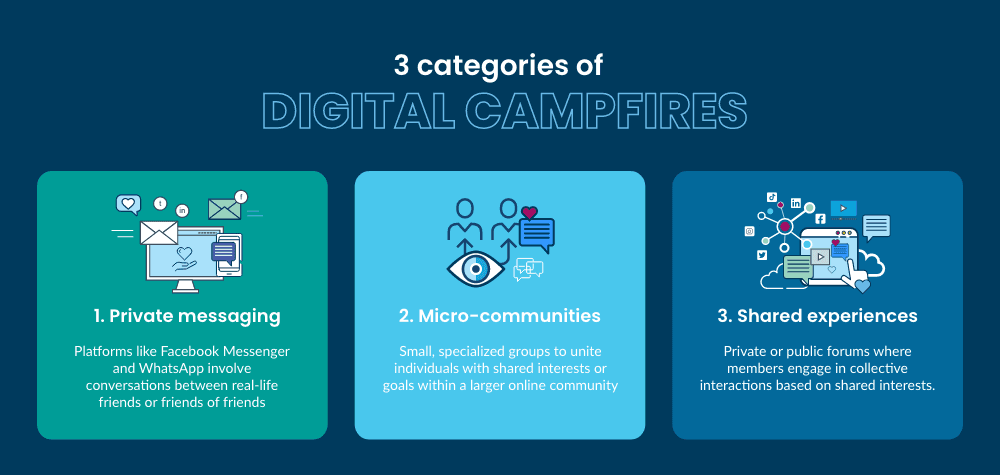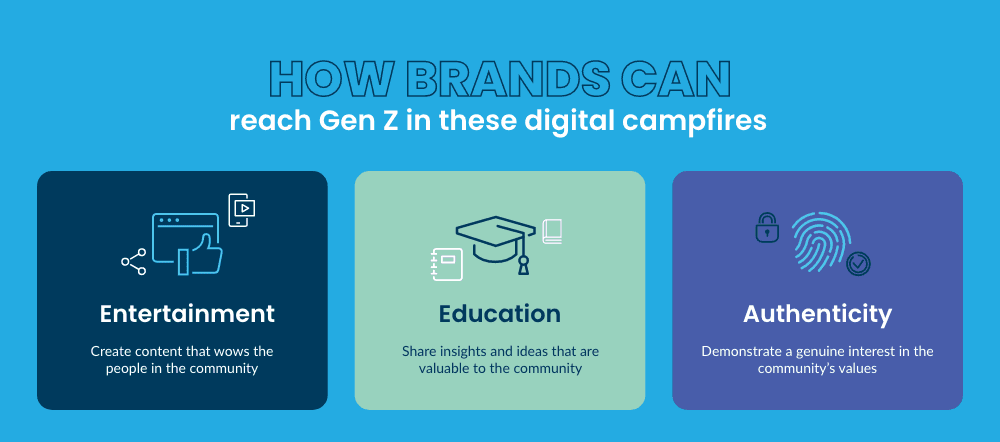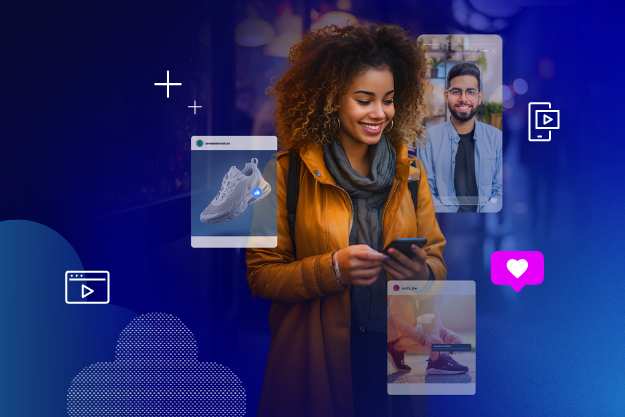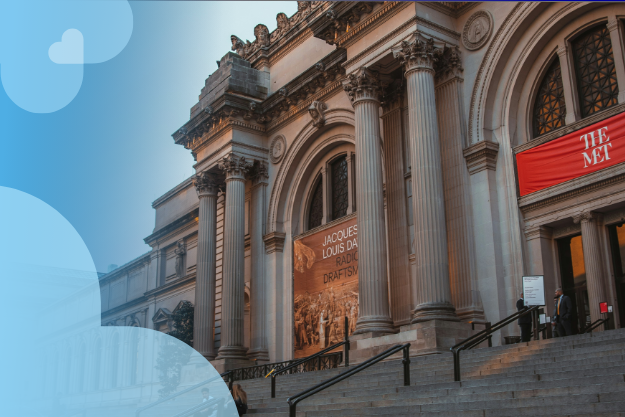If there’s one thing we know about Gen Z, it's that they want to go by their own rules and set the precedent for how brands market to them. They are single-handedly shaking up the marketing industry with their unique perspective on how they want to be marketed to.
Traditional marketing strategies, including social listening and paid social media advertising, are unlikely to yield successful results. Social listening, although valuable for gathering insights, may struggle to capture the nuanced context and sentiment within these dynamic discussions. Paid social efforts may come across as disconnected and promotional in an environment that values authenticity and shared experiences. This generation grew up with technology at their fingertips, and they're not easily persuaded by conventional marketing tactics. They value authenticity, transparency, and social responsibility, and they're not afraid to call out brands that don't align with their values.
Gen Z spending power is on the rise with $360 billion in disposable income, more than double what it was three years ago. So it only makes sense that your brand would want to reach this audience in any way possible. However, it may take more than just marketing on socials. You’ll need to meet them where they’re at — and, often with Gen Z, you’ll find them in digital campfires.
What is a digital campfire, and where do they exist?

Sara Wilson, an LA-based digital strategist and founder of SW Projects, coined the term “digital campfires” as micro-communities of people communicating together. These are people who are sharing online experiences and exchanging private communications via Facebook groups, WhatsApp chats, and Close Friends on Instagram, to name a few. The entire premise of a digital campfire is to veer away from sharing digital posts with your entire friends list, but instead build smaller communities with like-minded people to connect with.
Sara Wilson states that there are three categories of digital campfires:
1. Private messaging
Private messaging generally lives on traditional social platforms, such as Facebook Messenger and WhatsApp group chats. They’re usually made up of, but not always limited to, real-life friends, or friends of friends. These private messaging threads foster intimacy by allowing individuals to engage in one-on-one conversations and share personal thoughts and feelings in a more private and secure setting.
2. Micro-communities
Micro-communities also exist on traditional platforms. Examples of this are Facebook groups, Close Friends on Instagram, and even Slack. They’re generally small, specialized groups of individuals who come together around shared interests or goals within a larger online community. These groups can provide a sense of belonging, support, and connection among like-minded individuals.
3. Shared experiences
Shared experiences, in the context of digital campfires, consist of private or public forums where members participate in a shared experience based on shared interests. Essentially referring to moments of collective interaction among members of an online community, such as participating in group activities, events, or discussions.
Why brands are having a hard time infiltrating these spaces
Gen Z has gravitated toward the opinions and recommendations of their peers within digital campfires because they perceive them as more authentic and unbiased. Unlike traditional advertising or branded content, peer recommendations are often based on personal experiences and genuine enthusiasm for a product or service, rather than a profit-driven agenda. Digital campfires often attract individuals with similar interests or backgrounds, which means that recommendations are coming from people who are likely to share similar values and priorities. This creates a level of social proof that can reinforce trust in the recommendations being made within the community.
Brands that attempt to enter these spaces with overtly commercial messages or content that doesn’t align with the community's values or interests are likely to be met with suspicion or even hostility. They’re often self-governing, with community members actively policing content to maintain a sense of authenticity and community standards. Brands that attempt to engage in these communities without understanding the norms and values of the community, or without offering value beyond commercial gain, are likely to be rejected by community members.
It's not just about selling a product or service – it's about becoming a trusted part of the community, sharing common interests, and working together toward a shared vision of success. To truly become a part of digital campfires, brands must approach these online communities with a genuine desire to engage, offering real value to the members and building lasting, authentic relationships over time.
Three brand examples of a successful digital campfire
Successful digital campfires are a rarity, given their unique and dynamic nature. However, here are a few exceptional examples where brands have successfully cultivated these virtual communities, inviting their most engaged customers to participate in immersive and interactive experiences.
1. Fortnite
Fortnite has fostered a sense of community by providing a shared virtual space where players can gather, socialize, and engage in collaborative gameplay. For example, Fortnite’s Marshmello concert, which allowed players from all around the world to gather and participate in a shared experience. During the concert, players' avatars gathered at a virtual stage, where Marshmello performed his music live. The concert in Fortnite exemplifies how the game transformed into a virtual gathering place, where players could socialize, connect, and share a memorable experience.
2. Glossier
Glossier created a private Slack group made up of 1,000 of their most engaged customers as a means to foster a deeper connection with them. This exclusive community serves as a digital campfire where members can freely discuss and review Glossier products, share beauty tips and recommendations, and arrange meetups. Interestingly, the brand attributes the conversations within this group, along with other comments on socials, to the development of one of their best-selling products, the Milky Jelly Cleanser.
3. LEGO
LEGO has created a digital campfire through their LEGO Ideas platform, where fans can submit their own LEGO set designs and vote on their favorite projects. This fosters a collaborative community of LEGO enthusiasts who can share their creativity and provide feedback to one another. If a design reaches the required number of votes, LEGO considers producing it as an official LEGO set, giving credit to the original creator. This sense of achievement and validation further strengthens the sense of community and collaboration within the digital campfire.
How can brands reach Gen Z on these channels?

Discovering the perfect shared experience campfire for your audience is the key to building a thriving online community that will support and promote your brand for years to come. To make this happen, you need to start by identifying the cultural communities that align with your brand, and then dive deep into the online experiences your audience craves.
Here’s what your brand needs to do to secure that invite.
Entertainment: By creating content that is inspiring, engaging, and designed to provide value beyond commercial gain, brands can build trust and establish a presence within these communities, earning the respect and admiration of their members.
Education: When brands create content that’s not only engaging but also informative, while staying true to the values and interests of the digital campfire community, they have the power to become an integral part of that community. They can contribute valuable insights and ideas to the conversation, while building trust and loyalty among the members.
Authenticity: A “No sale pitches, period” approach is essential. By demonstrating a genuine interest in the community's values, and offering real value through products, or content that enhances the community experience, brands can earn the respect and admiration of the members. This empathetic approach can create a positive impact in people's lives while fostering a sense of community and togetherness that’s truly inspiring.
What not to do with your audience engaged in digital campfires
If you’re lucky enough to get the invite into these digital campfires, brands must tread lightly in order to be fully accepted in these communities.
When brands come across as even a little bit promotional or pushy, they risk alienating their audience and damaging their reputation within the digital campfire community. Avoid talking about yourself and making it all about you and your product as you may come across as self-centered and tone-deaf to the needs and interests of the community. Many digital campfire communities are built around specific topics or interests, and members are often looking for content or interactions that help them deepen their knowledge or engage with others in meaningful ways. It’s easy for brands to unintentionally derail these conversations and turn off potential customers. Another thing to note is that brands should respect and encourage open dialogue regarding any feedback and avoid any dismissive language.
Digital campfire communities are diverse and have different needs and interests. Therefore, a one-size-fits-all approach is unlikely to resonate with the members of these communities. Taking a personalized approach shows that your brand is invested in building genuine relationships with the community, rather than trying to sell products or services. By tailoring your approach, you can avoid coming off as generic or inauthentic, which can damage your reputation in the community and hinder your chances of longevity there.
The takeaway
Digital campfires are the heart of Gen Z's online community. They provide a space for individuals to come together, connect, and share their passions and interests. Brands that understand the importance of these communities and take the time to invest in genuine engagement can create meaningful relationships with this demographic. Ultimately, by tapping into the power of digital campfires, brands can become a meaningful part of this generation's online culture and foster a loyal customer base that will benefit both the brand and the community.
So don’t shy away from the challenge of infiltrating digital campfires, but embrace it, taking a customer-centric approach, and provide value that’s aligned with the community's needs, interests, and values.




































